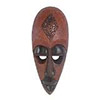Resource 1: Using artefacts in the classroom
![]() Background information / subject knowledge for teacher
Background information / subject knowledge for teacher
The opportunity to handle actual artefacts is a unique experience. For some reason that no one is quite sure of, the act of touching an object, which obviously has its own history and story, inspires everyone. Pupils will inevitably be curious about the artefacts and this will naturally lead to good discussion.
Handling an artefact allows pupils to use their senses, develop questioning and problem-solving skills, strengthen their understanding of a period, and empathise with people from the past.
What is the purpose of an artefact handling session?
Artefact handling sessions can be used to:
- motivate pupils at the start of a new topic;
- attract and hold the attention of pupils;
- deepen their understanding of a topic they are studying;
- lead to an in-depth study within a broader unit of work;
- act as a bridge between several different subjects or units of study;
- assess pupils’ developing understanding at the end of a lesson.
What questions should I ask during an artefact handling session?
The type of question you ask will depend on what you are using the artefacts for. The questions below should help you get the most out of using the artefacts.
Questions about the physical characteristics of an object
|
Questions about the design and construction of an object
|
Questions about the importance and value of an object
|
Questions about the function of an object
|
Teaching with objects – some approaches
Many of the approaches detailed below can also be used when interrogating documents, prints and paintings with pupils.
Visual stimulus
Objects can be used to stimulate discussion at the beginning of a lesson. The same objects can be used to recap what pupils have learned and to see if any of their ideas and understandings have changed in the course of the lesson.
Historical inquiry
A selection of objects can be used by pupils for an exercise in historical inquiry – obtaining information from sources. Allow time for pupils to look at the object carefully before exploring some of the following questions:
- What is it made of?
- What tools or techniques were needed to make it?
- Who might have made it?
- Did making it require specialist skills?
- Is it decorated? How?
- Who might have used it?
- What was it used for?
- Did it have a practical function, or was it used in other ways?
- How large or heavy is it?
- Is it a valuable or rare object?
Drawing comparisons and relating objects to each other
Use two objects or images side by side and ask pupils to draw comparisons, exploring the similarities and differences. Use groups of objects and talk about the relationships between them.
Representations and interpretation
Some artefacts may show evidence of a particular viewpoint or bias. Who created the object and for what purpose? Is it an item of propaganda? Does it tell the whole story? What doesn’t it tell?
Other activities using objects include
Prediction activities – show pupils an object and ask them to work out which period of history it relates to.
Case study – pupils can use a single object or group of objects to build up a case study, for example, life in West Africa before the slave trade.
Groupings – pupils can group objects into sets that have particular things in common (such as the materials they are made from, the country they originated from, how they were used). Pupils can consider how to curate a museum display by grouping objects in different ways.
Caption or label writing – pupils can write their own captions or exhibition labels, either from a modern viewpoint or as if they were writing at the time the object was made.
Emotional intelligence – pupils can list adjectives that describe how they feel about an object, demonstrating empathy as well as understanding.
Creative responses – pupils can respond to an object through creative writing, drama or art.
Which subjects can benefit from using artefacts?
Learning from objects is beneficial to subjects across the curriculum:
- History: sense of chronology, empathy and key skills.
- Science: properties of materials, observation, comparing, classification and questioning skills.
- English: asking and answering questions, contextual materials.
- Drama: stimulus materials, developing empathy.
- Art and Design: stimulus materials, contextual materials, still-life drawing.
Here are some pictures of Ghanaian artefacts to stimulate thinking.
 |  |  |
3. Interpreting evidence from artefacts



